Summer heat and strong sunlight can turn tretinoin from a skin-reviving treatment into a source of irritation, redness, or even burns. If you’ve been using tretinoin successfully through winter and spring, you might be surprised by how harsh the sun feels once June rolls around. That’s not just in your head-tretinoin makes your skin more sensitive to UV rays, and skipping precautions can undo months of progress.
Why tretinoin makes your skin more vulnerable in summer
Tretinoin works by speeding up skin cell turnover. That’s great for clearing acne, fading dark spots, and smoothing fine lines. But as old skin cells are pushed to the surface faster, your skin loses some of its natural protective barrier. Think of it like peeling back a layer of armor. Without that layer, your skin can’t defend itself properly against UV damage. A 2021 study in the Journal of Clinical and Aesthetic Dermatology found that users of topical retinoids experienced significantly higher sunburn severity compared to non-users, even with sunscreen.
It’s not just about getting sunburned. UV exposure can also make hyperpigmentation worse. If you’re using tretinoin to fade post-acne marks or melasma, too much sun can bring them back-or make them darker. That’s why summer isn’t the time to cut corners.
Apply tretinoin at night, every night
One of the biggest mistakes people make is using tretinoin in the morning. Don’t. Ever. Tretinoin breaks down in sunlight, so applying it during the day wastes the product and leaves your skin exposed without its benefits. Always apply it at night, after cleansing and before moisturizing.
Even if you’re planning to be indoors all day, UV rays still come through windows. If you’re working near a sunny window or driving, your skin is still getting exposure. Nighttime application is your safest bet.
Start slow if you’re new to tretinoin. Use it every third night for the first two weeks, then every other night. Once your skin adjusts, you can move to nightly use. But if you notice peeling, stinging, or redness that doesn’t fade after 30 minutes, cut back. Your skin doesn’t need to burn to improve.
Sunscreen isn’t optional-it’s your new best friend
You’ve heard it before, but here’s the truth: if you’re using tretinoin in summer, you need a broad-spectrum SPF 30 or higher, every single day-even if it’s cloudy. And yes, that includes when you’re just walking to the mailbox or sitting by the window.
Look for sunscreens labeled “non-comedogenic” and “for sensitive skin.” Mineral sunscreens with zinc oxide or titanium dioxide are often better tolerated than chemical ones, especially if your skin is already irritated from tretinoin. Brands like EltaMD UV Clear, La Roche-Posay Anthelios, and CeraVe Hydrating Mineral Sunscreen are popular among dermatologists for retinoid users.
Reapply every two hours if you’re outside. If you’re sweating or swimming, reapply right after. Don’t rely on makeup with SPF-it’s rarely applied thickly enough to give real protection.
Hydration is your secret weapon
Tretinoin dries out your skin. Summer heat and air conditioning make it worse. Dry skin flakes faster, which makes sunburn more likely and can trigger more irritation.
Use a simple, fragrance-free moisturizer right after applying tretinoin. Look for ingredients like ceramides, hyaluronic acid, or glycerin. Avoid anything with alcohol, menthol, or strong fragrances-they’ll sting. A thin layer of moisturizer before tretinoin (the “buffer method”) can help reduce irritation without blocking effectiveness.
Drink water, yes-but don’t think hydration alone will fix dry skin. Topical moisture is what matters. Keep a small bottle of moisturizer in your bag. Reapply after washing your face or coming in from the heat.
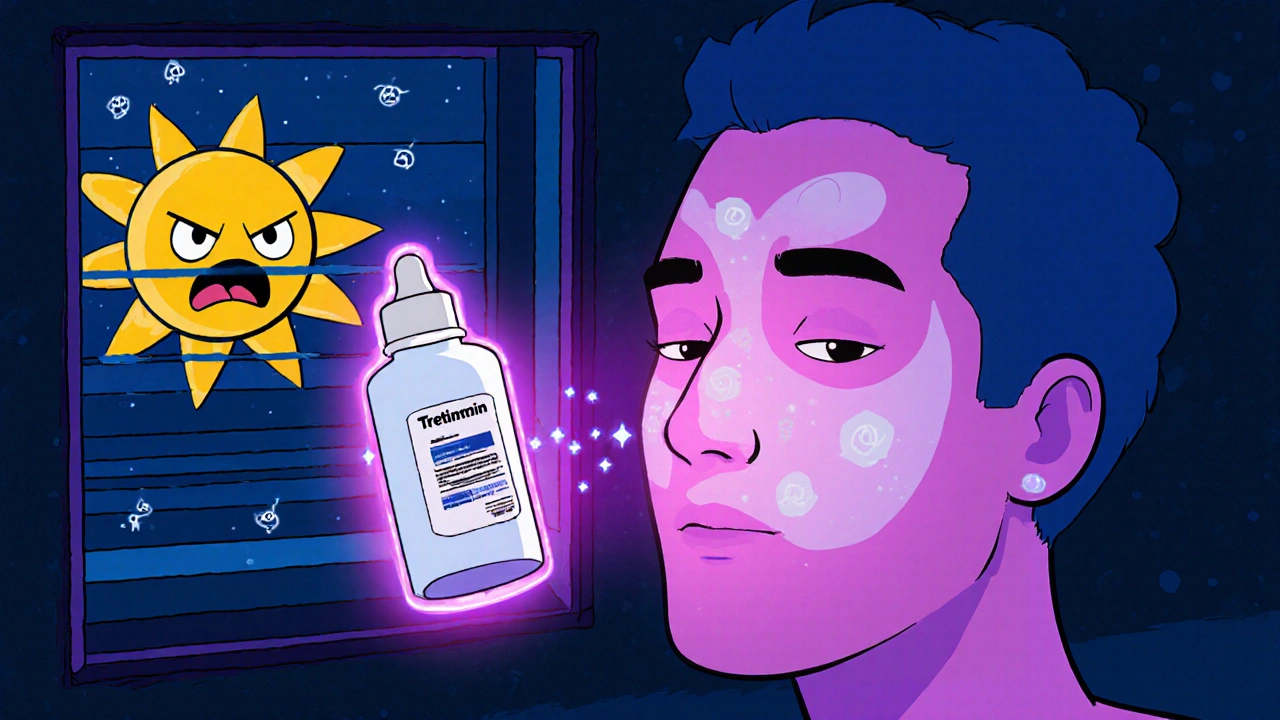
Avoid these summer skincare traps
Summer brings a lot of tempting products: exfoliating scrubs, chemical peels, acne spot treatments with benzoyl peroxide, and vitamin C serums. All of these can be great-but not when you’re using tretinoin.
- Don’t use physical scrubs. Granules or beads can tear at your already-thinned skin. If you want exfoliation, wait until fall.
- Hold off on chemical exfoliants. AHAs like glycolic acid and BHAs like salicylic acid can stack with tretinoin and cause serious irritation. Use them on alternate nights only if your skin is fully tolerant.
- Skip the vitamin C in the morning. While vitamin C is great for antioxidant protection, it can be too much for sensitive skin when paired with tretinoin. Stick to sunscreen and moisturizer until your skin adjusts.
- Avoid retinol alternatives. Don’t mix tretinoin with over-the-counter retinol or bakuchiol. They’re not safer-they’re just weaker. Layering them doesn’t help and can hurt.
Protect your skin beyond sunscreen
Sunscreen is essential, but it’s not the whole story. Physical barriers work better than any cream.
- Wear a wide-brimmed hat. A hat with a 3-inch brim blocks up to 50% of UV rays from reaching your face.
- Use UV-blocking sunglasses. The skin around your eyes is thin and easily damaged.
- Seek shade between 10 a.m. and 4 p.m., when UV rays are strongest.
- Wear lightweight, tightly woven clothing. A white cotton T-shirt only blocks about SPF 5. Look for UPF-rated shirts if you’re spending long hours outside.
If you’re going to the beach or hiking, plan your day around the sun. Go early or late. Bring a UV umbrella. These aren’t overkill-they’re survival tactics for tretinoin users.
What to do if your skin reacts badly
Some redness, flaking, and mild stinging are normal in the first 4-6 weeks. But if your skin becomes painful, swollen, blistered, or looks sunburned even after minimal sun exposure, stop tretinoin immediately.
Switch to a gentle cleanser and a plain moisturizer. Avoid all actives. Let your skin heal for at least a week. When you restart, go back to every third night. If the problem keeps happening, talk to your dermatologist. You might need a lower strength or a different formulation.
Don’t push through irritation. Tretinoin isn’t a race. Progress takes months, not weeks. One bad sunburn can set you back for months.
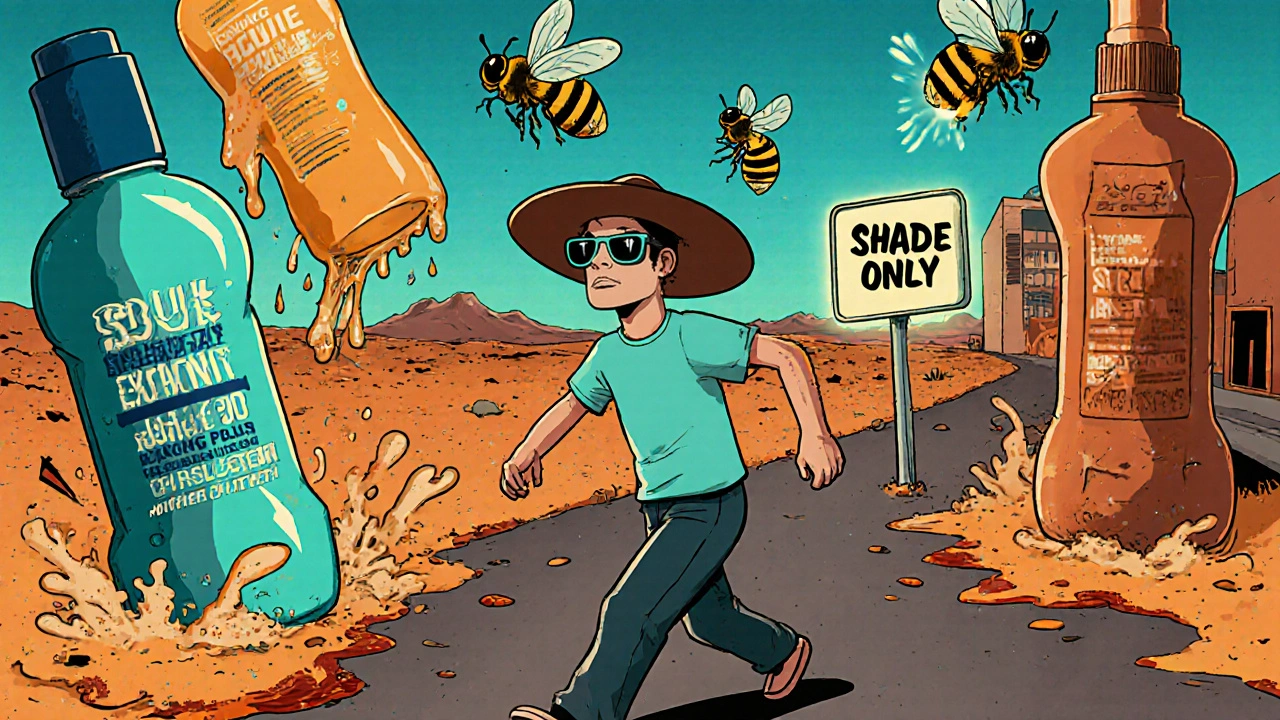
When to pause tretinoin completely
You don’t need to quit tretinoin for summer-but there are times when it’s smart to pause:
- You’re going on a beach vacation and won’t be able to reapply sunscreen every two hours.
- You’re planning a long day outdoors without shade or protection.
- Your skin is already irritated from heat, sweat, or chlorine.
- You’ve had a recent sunburn.
It’s okay to take a break. Your skin will still improve when you restart. Many dermatologists recommend a “summer pause” for patients with sensitive skin or those using higher strengths. You can resume in September when the sun is less intense.
Real-world example: Sarah’s summer routine
Sarah, 32, uses 0.05% tretinoin for acne and early signs of aging. Last summer, she got a bad sunburn after a day at the lake. Her face peeled for two weeks, and her dark spots got darker.
This year, she changed everything:
- She switched to 0.025% tretinoin at night.
- She uses CeraVe PM moisturizer right after cleansing, then waits 20 minutes before applying tretinoin.
- She applies EltaMD UV Clear SPF 46 every morning, even on cloudy days.
- She wears a wide-brimmed hat and stays in the shade between 11 a.m. and 3 p.m.
- She skips all exfoliants and only uses a gentle cleanser.
By August, her skin looked clearer and more even than ever. No burns. No flaking. Just steady progress.
Final tip: Track your skin’s response
Take a photo of your face every Sunday morning, under the same lighting. You’ll see subtle improvements-and catch early signs of irritation before they turn into problems.
Summer doesn’t have to mean stopping tretinoin. It just means being smarter. With the right routine, you can keep your skin healthy, protected, and on track-even when the sun is at its strongest.
Can I use tretinoin every day in summer?
Yes, if your skin tolerates it and you’re using strict sun protection. But many people find daily use too irritating in summer heat. Start with every other night and adjust based on how your skin feels. If you’re peeling, burning, or stinging, cut back.
Does sunscreen block tretinoin’s effectiveness?
No. Sunscreen doesn’t interfere with how tretinoin works. In fact, using sunscreen helps tretinoin work better by preventing UV damage that can undo its benefits. Always apply sunscreen in the morning and tretinoin at night.
Can I use vitamin C with tretinoin in summer?
You can, but not in the same routine. Use vitamin C in the morning under sunscreen, and tretinoin at night. Don’t mix them. If your skin is sensitive, skip vitamin C until fall. Focus on sunscreen and hydration first.
Why does my skin feel tighter and drier in summer with tretinoin?
Tretinoin increases skin cell turnover, which naturally dries out the surface. Summer heat, sweat, and air conditioning strip moisture even more. Use a hydrating moisturizer daily, and avoid hot showers or harsh cleansers. The dryness isn’t a sign it’s not working-it’s a sign you need more moisture.
Should I stop tretinoin if I get a sunburn?
Yes. Stop using tretinoin until your skin heals completely. Use only gentle cleansers and fragrance-free moisturizers. Resume slowly-start with twice a week-once your skin is no longer red, flaky, or painful. A sunburn can undo months of progress.
If you’re unsure about your routine, talk to a dermatologist. They can help you adjust your strength, timing, or products based on your skin type and lifestyle. Summer skincare with tretinoin isn’t about restriction-it’s about smart, consistent habits that protect your skin so it can heal properly.


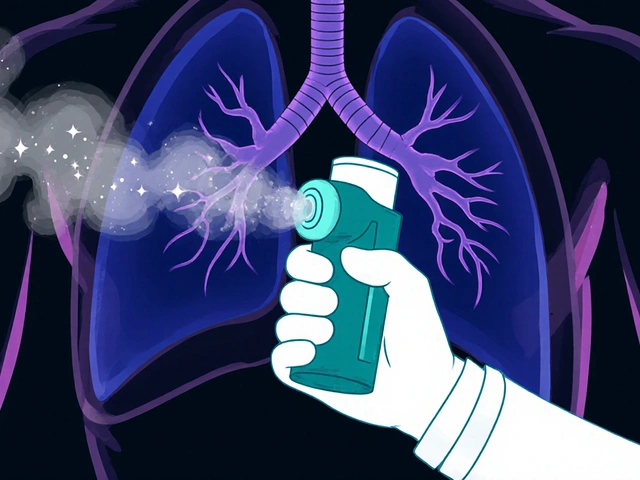

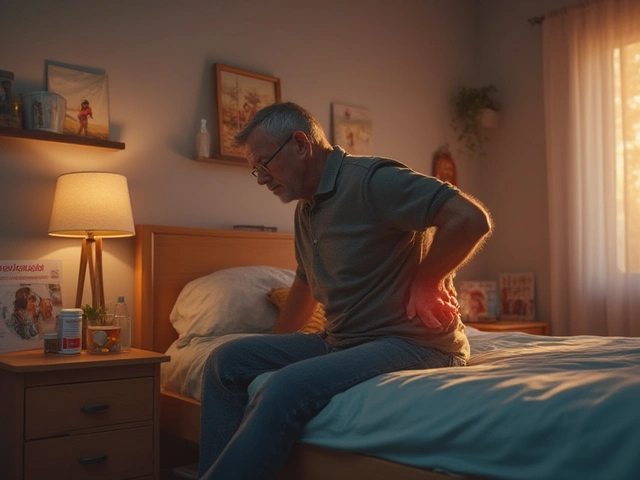
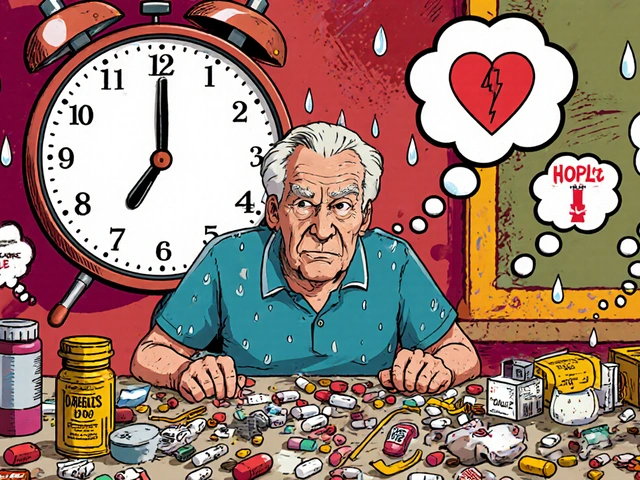

Comments
Cameron Daffin
November 2, 2025 AT 03:09 AMJust wanted to say this post saved my summer 🙌 I was using tretinoin daily and got burned so bad I looked like a lobster after a beach day. Now I stick to 0.025% at night, CeraVe PM before, EltaMD after, and a hat like it’s my job. No more peeling, no more dark spots creeping back. My skin’s actually clearer than last year. Trust me, it’s not about going hard-it’s about going smart.
Sharron Heath
November 3, 2025 AT 01:22 AMWhile I appreciate the comprehensive nature of this guide, I must emphasize the importance of consulting a board-certified dermatologist prior to altering one’s topical regimen. The physiological implications of retinoid use under prolonged UV exposure are not trivial, and individual skin phenotypes vary significantly. A personalized approach is always preferable to generalized advice, regardless of its thoroughness.
Steve Dressler
November 4, 2025 AT 04:33 AMOkay real talk-tretinoin in summer is like dating someone who’s hot but emotionally unavailable. You want it, you think you can handle it, but then your skin’s crying in the mirror and you’re like ‘why did I do this to myself?’ I used to think sunscreen was optional if I was indoors. Nope. UV rays don’t care if you’re binge-watching Netflix by the window. Now I treat my face like it’s a rare orchid. Moisturizer, hat, shade, no scrubs, no vitamin C chaos. It’s not glamorous, but my skin isn’t peeling off like a bad Halloween mask anymore.
Carl Lyday
November 5, 2025 AT 00:32 AMAs someone who’s been on tretinoin for 5 years and has had multiple summer flare-ups, I can confirm every point here. The biggest mistake I made was thinking ‘I’ll just use less tretinoin’-but that didn’t help. What actually worked was layering: gentle cleanser, hydrating serum with hyaluronic acid, then tretinoin, then moisturizer on top. And sunscreen? I use two layers: one mineral SPF 50, then a tinted one with iron oxide for extra protection against visible light. Melasma is no joke. Also, avoid hot showers. I switched to lukewarm and my skin stopped feeling like sandpaper. Patience is everything. Progress isn’t linear, especially in summer.
Tom Hansen
November 5, 2025 AT 09:09 AMfr fr tretinoin is just a scam the dermatologists made up to sell you more cream. sunblock dont even work anyway i got burned through spf 70 and still got dark spots. why even try? just go full goblin mode and let the sun do its thing. also why are you all so serious about your face? its just skin bro
Donna Hinkson
November 6, 2025 AT 07:10 AMI found that switching to every-other-night application in June really helped. I still use my sunscreen religiously, but I also started sleeping with a humidifier. My skin doesn’t feel tight anymore. It’s subtle, but it’s made a difference.
Rachel M. Repass
November 6, 2025 AT 14:22 PMLet’s reframe this: tretinoin isn’t a skincare product-it’s a ritual of surrender. You’re not just applying cream, you’re negotiating with your epidermis on a cellular level. Summer is the universe’s way of testing your commitment to the path. The sun doesn’t care about your goals. It’s a mirror. If your skin breaks down, it’s not failure-it’s feedback. The real win isn’t clearer skin-it’s learning to hold space for your skin’s needs without forcing it into someone else’s timeline. Also, wear the hat. The hat is the Zen master of sun protection.
Arthur Coles
November 7, 2025 AT 05:32 AMEVERYONE is lying about tretinoin. The FDA knows it causes permanent photosensitivity. They don’t tell you because Big Pharma makes billions off your flaking skin and replacement creams. And don’t get me started on mineral sunscreens-they’re full of nano-particles that penetrate your blood-brain barrier. That’s why your brain feels foggy after summer. They want you addicted. Sarah? She’s probably a plant. I’ve seen 3 people with ‘perfect’ tretinoin skin… all of them had insurance-covered laser treatments on the side. Don’t be fooled.
Kristen Magnes
November 8, 2025 AT 10:00 AMYou got this. I know it feels overwhelming, but you’re not alone. I used to panic every time my skin flaked. Now I see it as my skin saying, ‘Hey, I’m working.’ Just stick to the basics: clean, hydrate, shield. No need to overcomplicate it. If you miss a day of sunscreen? Don’t beat yourself up. Just reset tomorrow. Progress isn’t perfect-it’s persistent. And your skin? It’s rooting for you.
adam hector
November 9, 2025 AT 11:16 AMYou think you’re being smart with your SPF and hats? Nah. You’re just delaying the inevitable. Tretinoin is accelerating your skin’s decay. The ‘clearer skin’ you see? It’s a placebo. Your skin is thinning. You’re just not seeing the collagen collapse yet. Wait till you’re 40. Then you’ll understand. All this ‘routine’? It’s just a distraction from the truth: you’re fighting biology with lotion. The sun doesn’t lie. Your skin will betray you. Just accept it.
Ravi Singhal
November 10, 2025 AT 08:50 AMi live in india and we dont really use spf here but i started tretinoin last year and my face got so red i thought i was gonna die. then i just started using aloe vera gel at night and stayed inside 11am-4pm. no moisturizer no nothing. now my skin is okay. maybe you dont need all this stuff? just chill and let skin breathe?
Victoria Arnett
November 11, 2025 AT 21:46 PMI tried the buffer method and it worked but now my skin is weirdly shiny in the morning is that normal
HALEY BERGSTROM-BORINS
November 12, 2025 AT 22:01 PMDid you know that sunscreen can contain endocrine disruptors that mimic estrogen? And that’s why your skin might be breaking out even with SPF? The chemicals are in your bloodstream. I stopped using chemical sunscreens and switched to zinc oxide only. My melasma improved within 3 weeks. Also, I stopped using tretinoin for 3 months. My skin didn’t collapse. It reset.
Sharon M Delgado
November 14, 2025 AT 20:27 PMAs a Filipino-American, I’ve seen my mother use coconut oil and banana peels for sunburns since I was a child. We didn’t have SPF 50-we had shade, hats, and wisdom. Maybe the answer isn’t more products… but less? Maybe we’ve been sold a myth that we need 12-step routines to protect skin. Sometimes, the oldest remedies are the most effective. I now wear a salakot (traditional hat) with a long veil. My skin has never been better.
Dr. Marie White
November 14, 2025 AT 21:48 PMThank you for this. I’ve been hesitant to ask my dermatologist about summer adjustments because I didn’t want to seem ‘difficult.’ But your post gave me the language to explain what I’m experiencing. I’m going to schedule a consult this week to lower my concentration and discuss mineral sunscreen options. It’s okay to adapt.